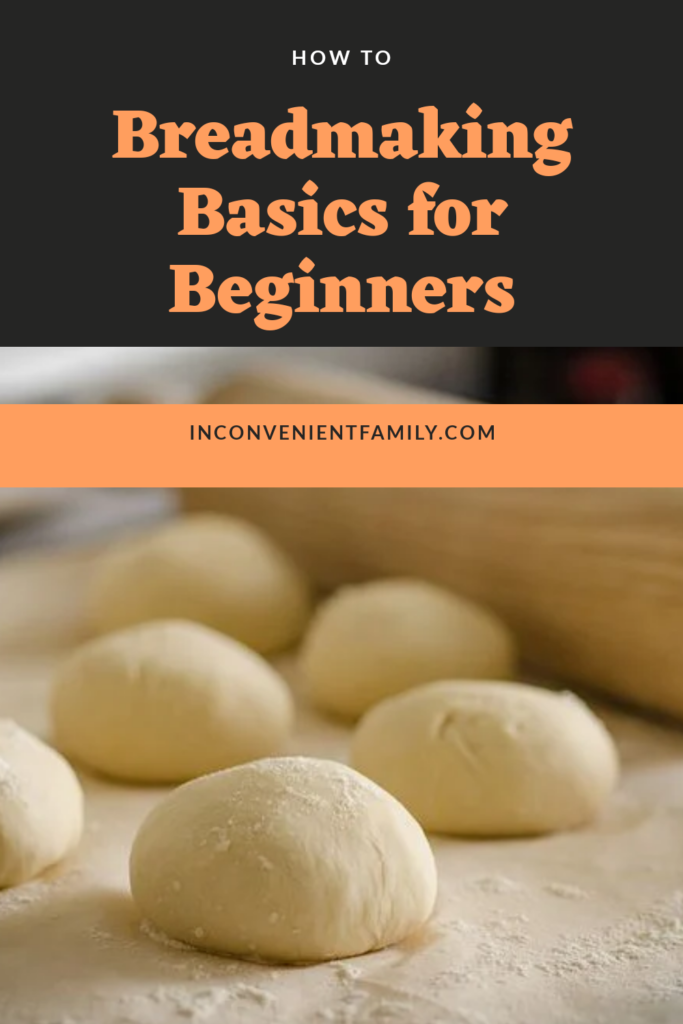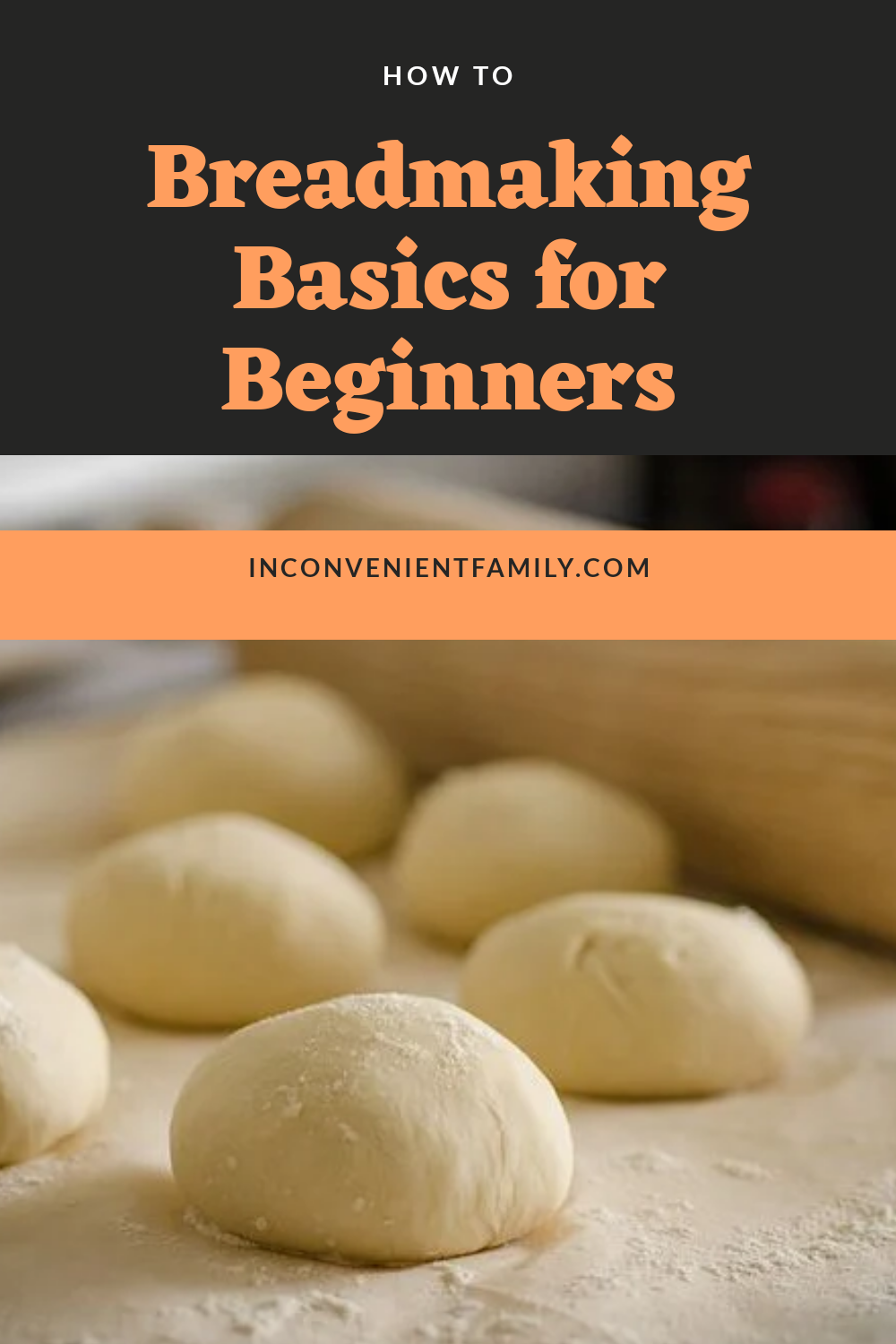Breadmaking Basics for Beginners
I don’t know about anyone else but sometimes I have this really cool interest and when I start to learn about it I get all freaked out because it looks SO overwhelming! Anybody else have that issue? So I thought I would write a post on Breadmaking Basics for Beginners since there may be a lot of you wishing you could make your own 🍞 bread.
First of all, I don’t know about you all but I am seriously tired of this mess going on. But one thing it has taught me and been a positive influence on is my view of food. I’ve always made a lot of things homemade but in the last few weeks I’ve been cooking so much more! Why? Partly because I’ve been trying to stretch what we have so we can shop less often, partly because I want to save money and ….big reason here…I want to eventually gain food independence!

What the heck do I mean by food independence?
Food independence to me is quite simply the lack of need to go to a grocery store or depend on it to supply my family’s needs. Am I there? Absolutely not! Am I closer than I was 2 months ago? Definitely! So anyway, all this rambling to say that I’ve been making ALL kinds of homemade breads lately, from yeast rising to sourdough and I’m here to help you figure all that out! So lets get started.
Lets talk about our differences.
First off lets get some differences squared away. If you’re new to Breadmaking or perhaps used to using a bread machine you may need to understand exactly what is different about yeast rising and sourdough breads.
Breadmaking…Sourdough versus yeast rising…
I am not here to debate which is better, sourdough or yeast rising. I actually love them both. That being said, there are differences and benefits to both. Yeast rising are quick and take about 3 hours from start to finish. Sourdough takes longer and usually takes me about 8 hours. However sourdough is an accomodating friend and doesn’t demand you do anything on a schedule really. So for example, if i have the extra time I’ll put my sourdough on to soak in the early morning and have it for supper but if I’m running late I may make a pizza crust with the dough in an hour instead of waiting. Is the flavor better if you wait? Yes, buts its still delicious and wayyyy better than anything store bought!
With both breads you need all-purpose flours. I personally use freshly ground Prairie Gold wheat but you can use unbleached white, regular whole wheat or a combination. Just don’t use self-rising! It already has baking powder and salt and will make your bread be a flop.
The other ingredients vary with the recipe but typically call for fats, sugars, salt and water or milk. I use a recipe for both sourdough or yeast rising that uses eggs, extra virgin olive oil or butter, buttermilk, honey and sea salt. If you don’t have an ingredient like oil or eggs bread can still turn out great. The only real necessities are water, flour, salt and yeast of some kind. The other ingredients add richness, moisture and flavors. They also enable it to taste fresher longer.
Another thing I use all the time in my Breadmaking is my Kitchenaid stand mixer. 8 years ago I bought a professional grade mixer and I have to tell you, that was such a great decision! I use it ALL THE TIME! I can mix enough bread dough at once for 4 loaves or 4 pans of rolls. Huge time saver and does a phenomenal job. That being said, you can knead by hand just fine too. It just takes longer and is more labor intensive on your part and messier lol. My kids love to help me finish off my kneading. Lets just say…flour ends up a lot of places! So if you have the extra money a stand mixer is a great purchase. If not, it won’t make a huge difference except maybe your hands will get stronger, lol.
Basic Breadmaking: Homemade Yeast 🍞 Bread…
So the steps to making homemade yeast bread are super simple and I’m going to start that first. Gather a mixing bowl or stand mixer, measuring cup, measuring spoons, warm water, yeast, oil, milk, eggs, salt, honey and flour. Now you’re ready to start!
First add 2 tablespoons of yeast to 1/2 cup of warm water. What is warm water? It means Its not cold but doesn’t burn you. Just warm, not hot! Stir it and let that sit about 10 minutes. If your yeast is active it will get nice and bubbly. If not, then you either put hot or cold water or your yeast is bad. You won’t get a good turnout😥
Now, your yeast mixture is good and bubbly lets add 1 cup warmed milk to it, 3 eggs, 1/2 cup melted butter or olive oil, 1/4 cup honey or sugar and about 3 cups of flour. Mix this really well and let it sit another 15 minutes. This will give you wgat is called a sponge and its going to make your dough better! If you have to skip the rest you can and go straight to the next one.
Ok, now you add 2 tsp of sea salt and another cup of flour. Now you can put it on your mixer with the bread dough hook at speed 2. Gradually add flour 1/4 cup at a time until your dough forms a ball. With whole wheat you have to be a little more careful to not add too much flour. After it forms a ball or starts following the dough hook let it knead 1 1/2-2 minutes then turn out onto a floured counter. Kmead until elastic and the dough bounces back when you like your finger in it. Place it in an oiled large bowl and cover. Let it rise somewhere nice and warm 45-60 minutes or until doubled.
Oil your pans. Divide into 24 rolls and put 12 in each pan or make 2 loaves of bread. Lightly Cover and let rise until doubled again 45-60 minutes. Preheat oven to 350 and bake for 20-30 minutes until golden. Brush with butter and enjoy them!
Now what?
Look how simple that was. Yeah I know it seems somewhat overwhelming at first. But the more you make it the easier it gets until one day you realize you’ve memorized your recipe and could make it in your sleep🎉.
Come back next week for learning Part 2: Sourdough Bread for Beginners!

I simply want to mention I’m newbie to blogging and site-building and absolutely savored this web page. Very likely I’m planning to bookmark your website . You definitely have good writings. Bless you for sharing with us your blog site.